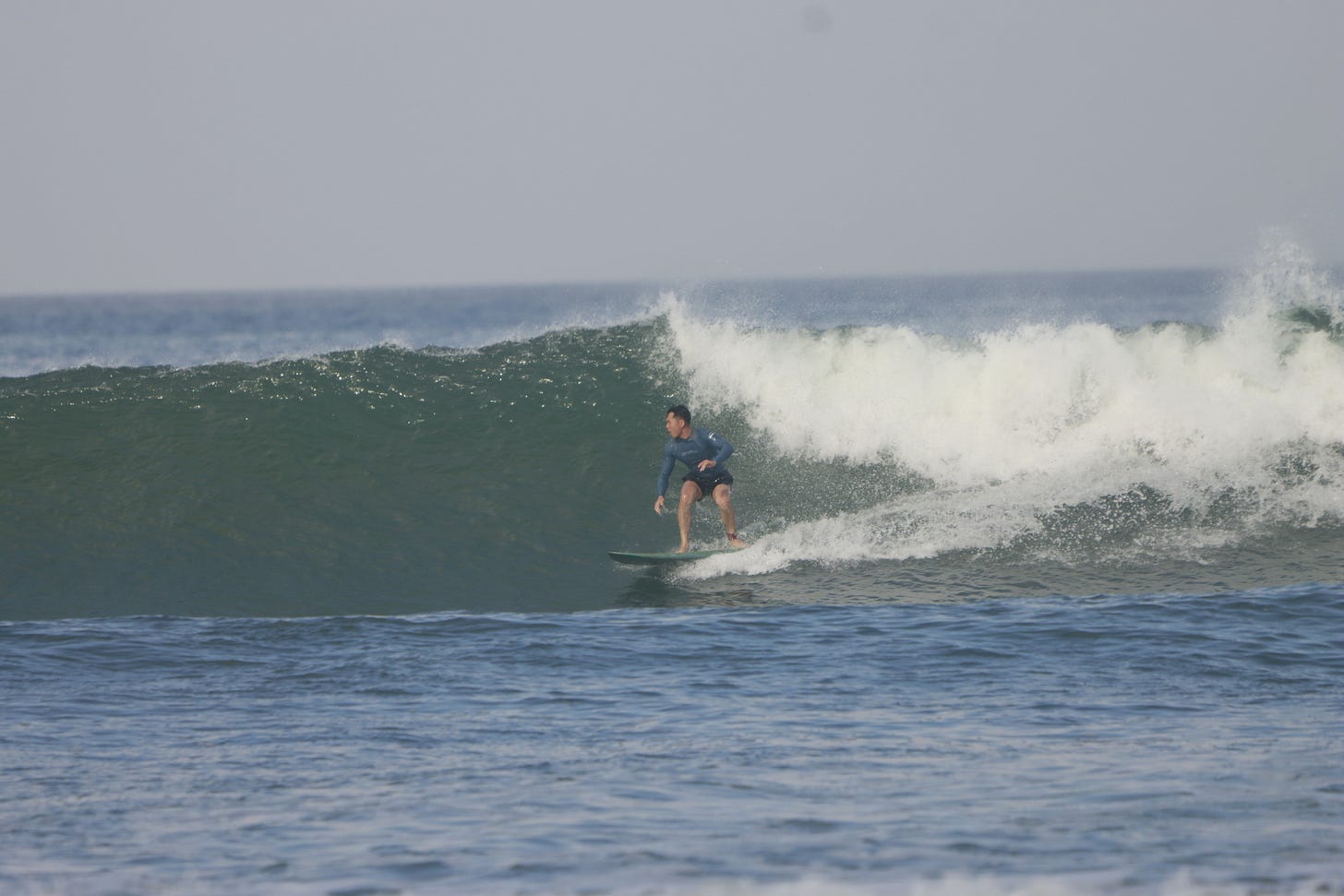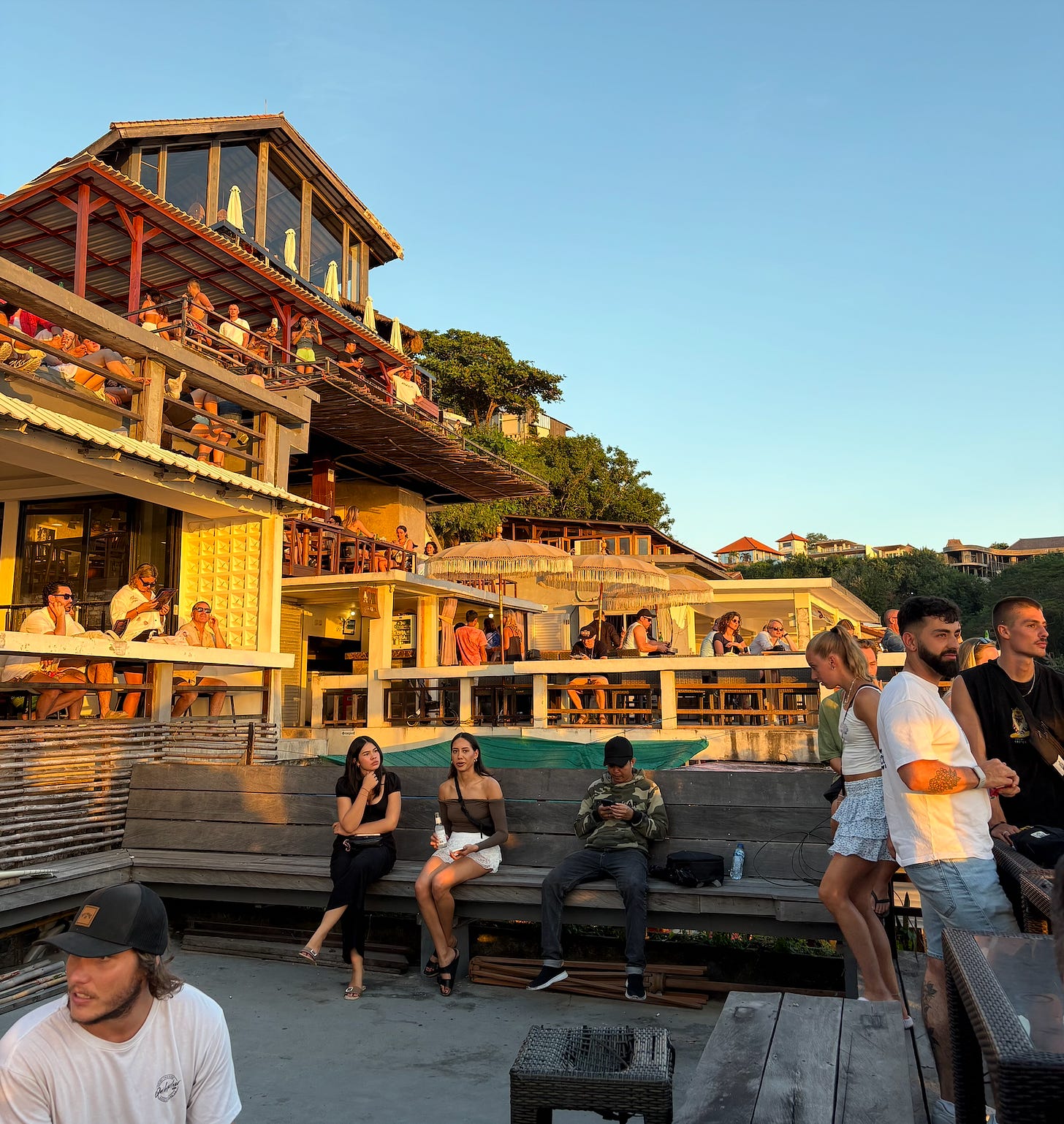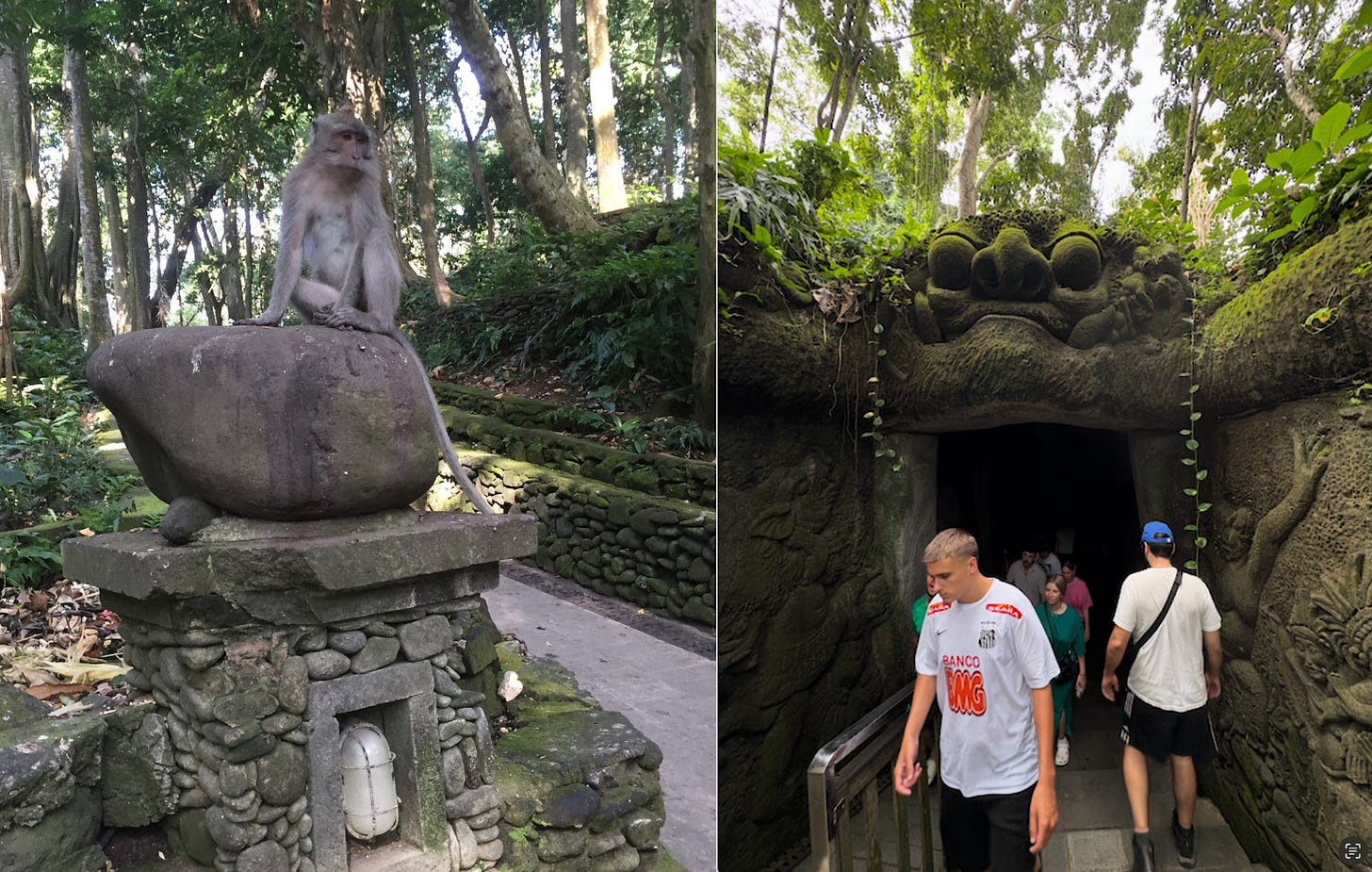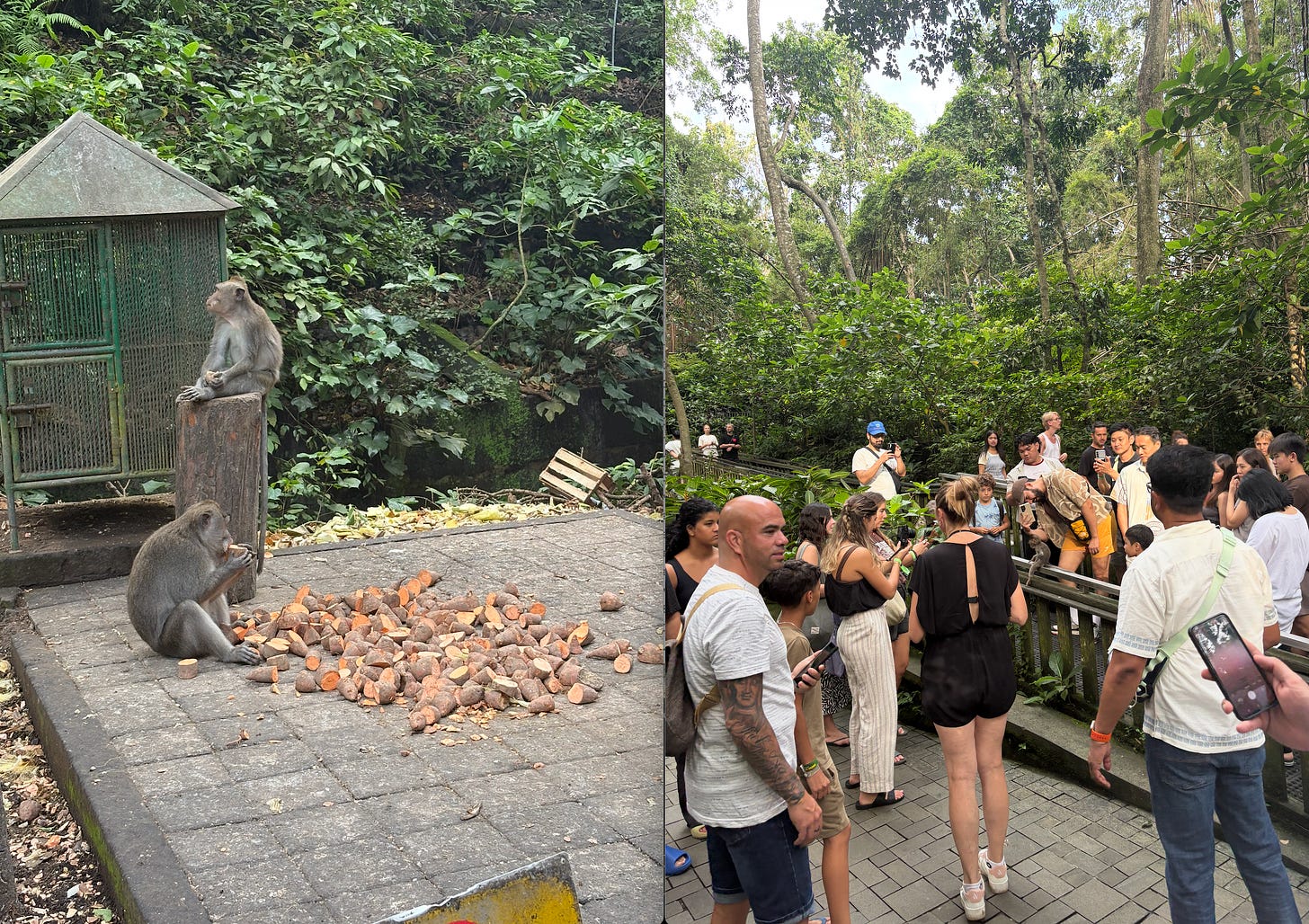The Inevitable Transformation of Bali into the Instagram Capital of the World
Some of my travels this summer and a few articles as well
Three summers ago, my partner and I decided to go peak nomad by visiting Europe for the summer. We loved it so much that we’re now in London for a few weeks until mid-August and then eating and hiking our way through Switzerland / Italy in the back half of the month. Say hi if you happen to be in the same area and would like to meet up.
Earlier this summer, I spent two weeks in Bali. Week one comprised of our annual team offsite in Canggu. Week two was me dealing with Bali Belly and pooping my guts out while surfing and working from Uluwatu.
Like every other place in the world in the last 10 years (except for SF), Bali has changed tremendously. But the direction of the change was pretty much inevitable given the clientele of the tourists (like me) that were starting to visit.
Bali’s most populated city, Kuta, starting in the 1970s attracted Australians satisfying their fix of “Beaches I can trash while staying absolutely hammered 24/7”. This dynamic coexisted later on with hippies, early digital nomads, and existential middle-aged women seeking to recuperate their soul, visiting the less discovered gems on the outskirts from Kuta in different cities like Ubud and Canggu. But even when I visited Canggu seven years ago, the city was already slowly starting to form into a centralized hub for nomads and early twenty-something Europeans realizing they could escape the crowds of drunk Australians in Kuta and still have a good time. And in my last visit this summer, this expansion had only intensified into it’s absolute peak. The max exploitation of Bali's only natural resources: waves, nice weather, and poor locals dependent on tourism dollars.
What does the inevitable tourist dollars bring from people like me in 2025? Well, for one, it was almost a paradise for my team offsite. Unlike visiting Marrakesh last year for our offsite, where we couldn't walk five paces without someone trying to rip us off with "authentic" rugs, Bali delivered exactly what our global remote team actually needed. There were co-working spaces with gyms, saunas, and cold plunges. High-end restaurants with three-story decks and Instagram-worthy presentations. And any kind of service necessity from a van tour, to food delivery, and daily Airbnb cleanings, all at an incredibly low Balinese per hour rate.
But in my opinion, Bali had reached a clearly unsustainable level given Bali’s existing infrastructure. My surf camp in Uluwatu for example, needed daily water truck deliveries because the entire Bukit peninsula area lacked well water access. Motor traffic, once bad, became impossible as swarms of scooters and cars overwhelmed the small roads. And the surf breaks revealed the ultimate ironic economic efficiency: as any competent local Balinese surfers discovered that babysitting and pushing tourists into waves paid significantly better than actually enjoying those waves for themselves.
Even the monkey sanctuary revealed the over-capitalization of the Bali jungle experience. Ten years ago, I walked in and paid a guy sitting on a step ladder smoking a cigarette in cash while he waved me in. This year: a full on entrance experience with lines, cave walkways, and enough infrastructure to make Disney jealous.
The hipsters had to be furious. Anyone who visited when it "back then when it was good" has probably sworn off Bali. But Bali's transformation into an fully well capitalized version of Instagram has been essentially complete. What happened even in the last 10 years was a complete clientele makeover: the $5 hostel and warung crowd either got priced out or made enough money to demand co-working saunas and photogenic breakfast bowls instead.
I feel for the Balinese locals who maybe didn't choose this exact transformation. I remember seven years ago talking to a local who mentioned that when Bali’s infamous volcano starts erupting, the whole island starves as tourist flights get canceled. I can only imagine what happened during the first parts of Covid. But they've rebounded quite well and so far the locals are riding it quite expertly. Whether they'll miss the simplicity of actual hungry monkeys and a bunch of foreigners sitting in the surf break, that's not really for me to say.
I wish the very best of luck to Bali. Hopefully they can figure it out where the line in the sand is between the tourist capitalization of their economy and making it a truly great paradise of surfing, jungle, and vibes.
I heard Siargao is the next Bali. But when I looked, it's still stuck in backpacker paradise mode—which means it lacks the infrastructure I need as a 30-year-old who's graduated from hostel life. This reveals the uncomfortable economic truth about places like Bali: we don't just discover them, we upgrade them. I just know that somewhere right now, some Austrlian in Siargao is probably installing its first co-working sauna.
Things to Share
I realized I don’t share any of my Youtube videos on my blog even though I’ve started to create and write much of the content myself. So here’s a video on why I think Big Tech culture is essentially dead, as well as another one on what I’m seeing in tech interviews over the past few months.
Philo from MD&A has a short essay on Thesis Drift. I can’t personally say I ever really write out a thesis for why I invest in something like stocks or crypto. Many times I’ll approach it in the form of “wow look there’s a dip, I’m going to buy”. There really isn’t an additional thought of “wait why did it dip and does my original thesis still stand?” This happened with the tariffs and worked quite well. And ultimately has worked in the past 10 years because the entire US stock market has been on maybe the longest running bull market of all time? In some sense, it’s actually been a long term macro bet. But I’m not sure if I can really rely on the strategy for much longer.





